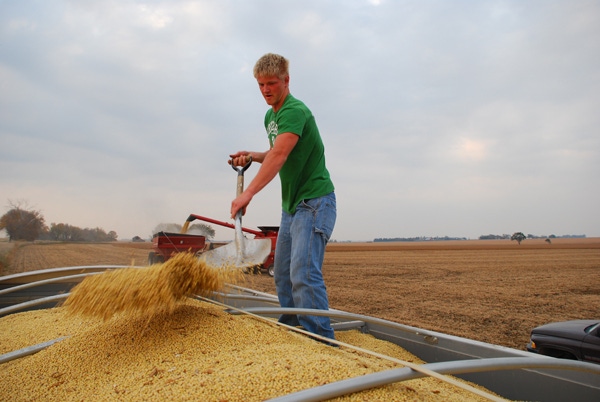August 31, 2011

Weather conditions this year increase the possibility of aflatoxin in corn. In general, aflatoxin does not cause yield losses, but causes quality losses. Quality losses are covered by farm-level crop insurance plans contained in the COMBO product. Within COMBO, discount factors are calculated for grain with aflatoxin. These discount factors then reduce the yield that is used in calculating indemnity payments.
If aflatoxin is suspected, the crop insurance agent should be contacted immediately. The agent will notify the insurance company who will arrange for independent testing for aflatoxin and the farmer must pay for the independent testing. Before insurance claims can result, aflatoxin levels must exceed 20 parts per billion (ppb). Depending on the delivery source and arrangements made between the crop insurance company and the farmer, these samples can be taken from the field or immediately on delivery to a commercial source. It is critical that testing occur before grain is placed in storage, as federal crop insurance will not cover losses occurring in storage. Testing after placing grain in storage could result in invalidating claims for aflatoxin.
For grain having aflatoxin that is delivered and sold to a commercial source, the discount factor will be based on the reduction-in-value. The reduction-in-value equals the sales value of aflatoxin-free grain minus the value of grain with aflatoxin. For example, take a $6 market price for aflatoxin-free grain and a $5.40 price for grain with aflatoxin. The reduction-in-value is 60¢ ($6 - $5.40). The discount factor in this case equals 0.10 (60¢ reduction in value / $6 market price).
In calculating yield for crop insurance purposes, the result of the discount factor subtracted from 1.000 is multiplied by actual yield to determine yield to count in guarantee comparisons. Take a 0.1 discount factor and a 170-bu. yield. In this case, the yield to count in guarantee comparisons is 153 bu. (170 yield x (1 - 0.1 discount factor)).
Reduction-in-value procedures listed above are used to calculate discount factors sold to commercial delivery points up to 60 days after the end of the insurance period. For grain that is fed to livestock or is not sold before 60 days after the end of the insurance period, the following discount factors are used:
20.1 – 50 ppb: .1 discount factor
50.1 – 100 ppb: .2 discount factor
100.1 – 200 ppb: .3 discount factor
200.1 – 300 ppb: .4 discount factor
300.1 and above ppb: .5 or 1, depending on a number of factors
Claims with aflatoxin levels above 300 ppb will not be completed until the corn is sold, fed, used or destroyed. Further information on aflatoxin is available from the following Risk Management Agency fact sheet here
You May Also Like




